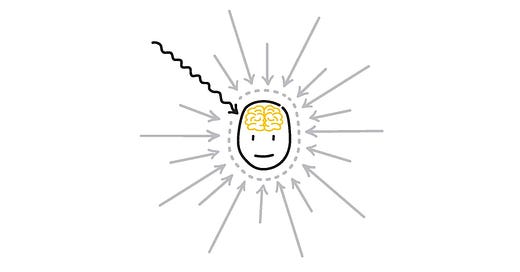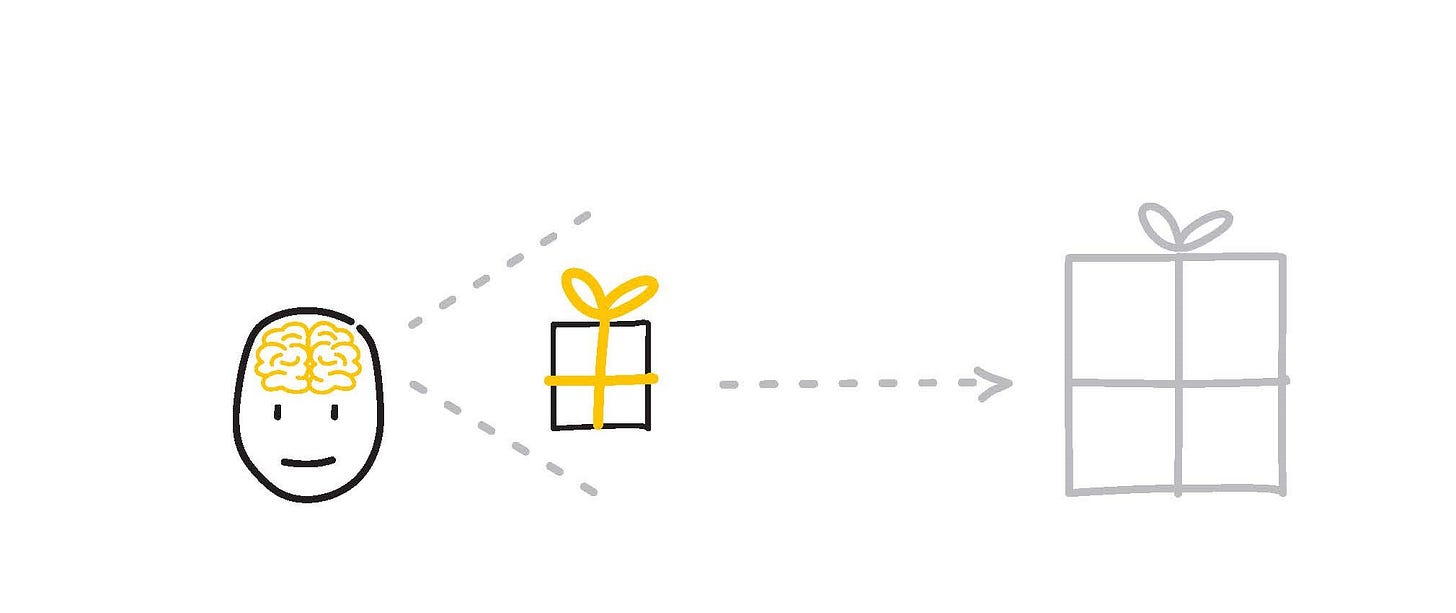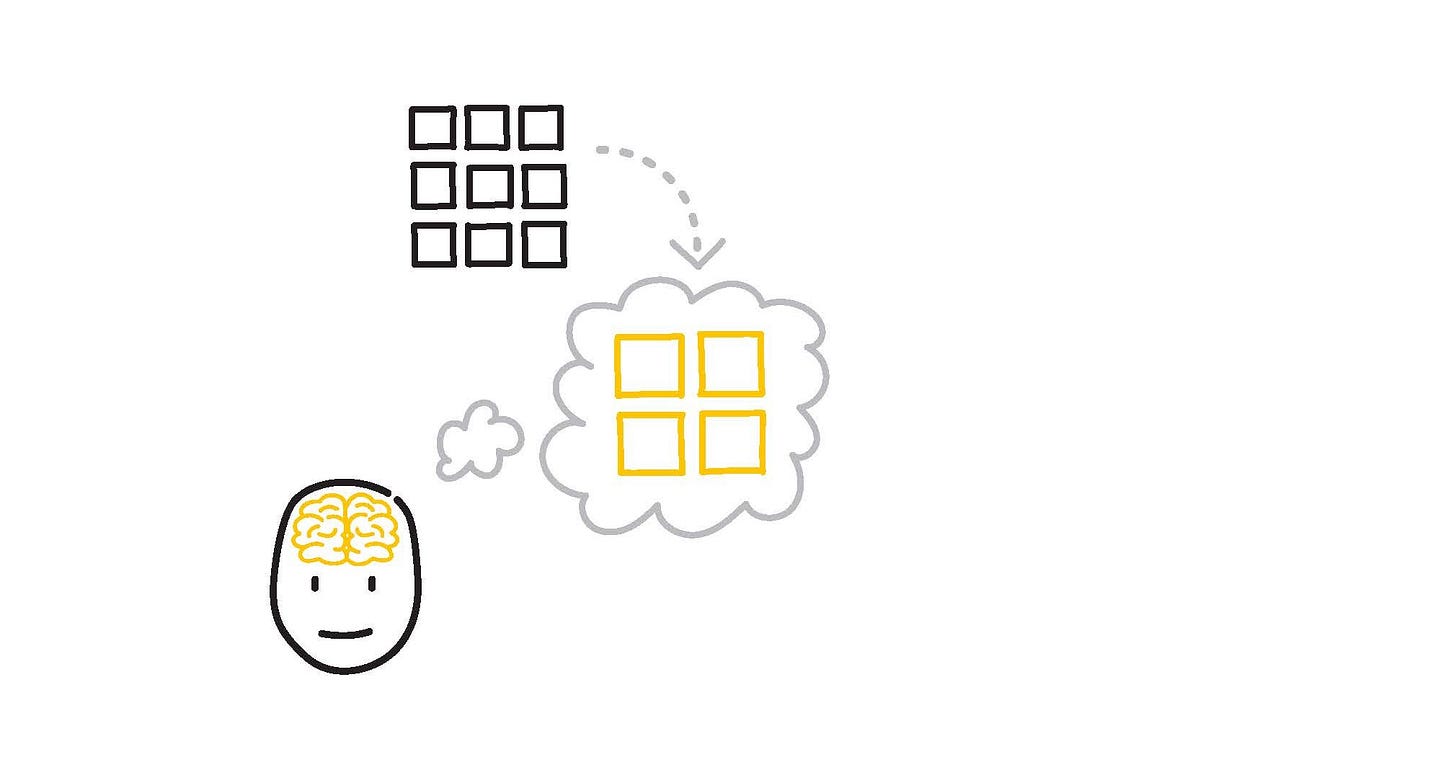How our brains mislead us
Hi there,
In chapter 10 of GRIP, I talk about our brains. More specifically: how good our brains are at misleading us and what we can do about it.
Humans have developed a whole slew of ways to cope with reality. It’s no short list! And this cognitive bias can get in the way of seeing things as they are. Here are the four main ways our brains distort things:
1. Our brains are good at filtering things. Maybe too good
It makes sense that our brains filter things so aggressively. Otherwise we’d be overloaded with input every day. Now, only select information gets through.
Our brains are constantly filtering out the things that are normal for you, things that resemble other familiar things, and things that don’t square with your worldview.
But that means you can completely miss key information. You think you’re seeing everything, but you’re not. Your brain simply won’t register things you consider ordinary, things you’re not focusing on at the moment, or things you don’t believe in. And odds are, you won’t even know you’re missing anything.
2. Our brains fill in the gaps
We often think we have a full picture, based on what we observe directly. But that’s not the case. You only partly observe what’s happening; you fill in the rest—usually without realizing it. It’s a bizarre sort of augmented reality, but one that’s so convincing you hardly notice.
Filling in the gaps with guesswork isn’t a bad way to make flash decisions. It can be super-efficient. But it’s also flawed.
We oversimplify, for instance, in an attempt to understand the world. Missing puzzle pieces are filled in with past experiences. The things you like take precedence. And we think we know what others are thinking.
3. Our brains prefer fast to slow
Making quick decisions can be a matter of survival. It’s something our ancestors knew all too well. That’s why people can feel sure of themselves despite having limited information, and why we tend to take what we can get now rather than what’s good for us in the long run.
We’re also motivated to finish what we’ve already invested in. Switching gears seems like a waste, even when we suspect we’re heading in the wrong direction. And so we avoid decisions that can’t be reversed, and we do everything we can to maintain our personal status in the here and now.
4. Our brains remember things creatively
Our brains sort the information we take in, putting it in categories that make it easier to remember and retrieve. In the process, we forget some details, fabricate new ones, and store memories in a favorable light, so they won’t clash with our worldview or self-image.
Of course it’s uncomfortable to realize you can’t wholly trust your own memories. But it’s critical we understand that the history in our heads can deviate from what actually went down. To presume otherwise can be dangerous.
Okay, so my brain’s not to be trusted. What now?
The first step is to realize this happens. All day long. And in most cases, that works fine. Nothing to see here, nothing to be ashamed of. The fact that our brains apply these techniques to survive and cope is good news, on the whole. It means we’re able to anticipate future events and respond to all kinds of complicated situations without using too much energy.
The downside is that your brain can get in your way, leading to everything from poor choices to walking around with blinders on, which can make working together tough. And in many complex, real-world situations, cognitive bias makes you far less effective than you could be. Understanding how our brains constantly throw us off can help us better appreciate input from other people, see our own ideas in a fresh light, and make better decisions.
Second, you can start to get clear on the four categories:
You simply don’t have all the information
That picture in your head is part reality and part something your brain made up
You’ll tend to favor the quick win over long-term gains, even when that’s not the best move
You can’t always rely on your memory
The more you learn about cognitive bias, the more you’ll see it in others (or think you see it). In any case, make your unreliable brain a topic of conversation at work, with close coworkers and with the wider team. Another thing that can help is the Big Cognitive Bias checklist from GRIP (you can also find it in my June issue on Nuanced Thinking).
And then for one last type of mental pitfall: confirmation bias. This is an error from the first category—our all-too-aggressive mental filter. We tend to be good at noticing information that lines up with what we already think. (“See? I knew it!”) And we’re also good at completely disregarding any evidence to the contrary. That can make us stubbornly stick to our story, blind to the alternatives.
Besides exposing yourself to other views and standpoints, you can take time to examine your own assumptions (that list above can help). That’s something we can help each other to do, too.
This fantastic post by Buster Benson from 2016 got me thinking about all of this. It’s a great starting point if you want to find out more.
Have a good week!
Rick
produced by the language girl







